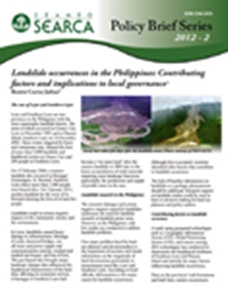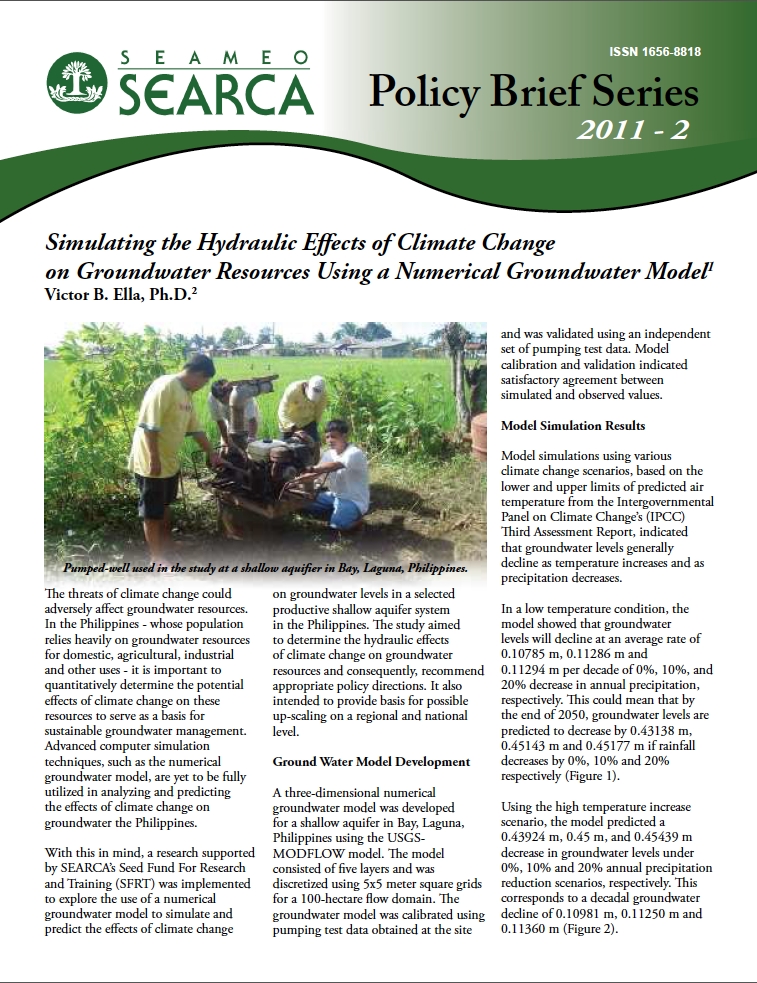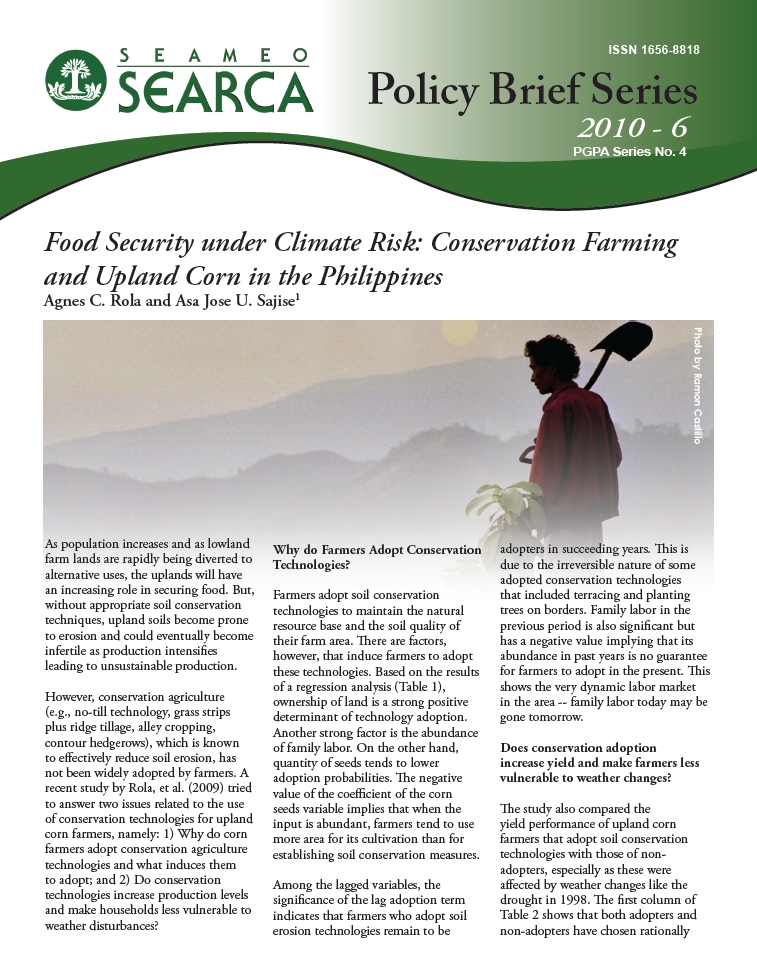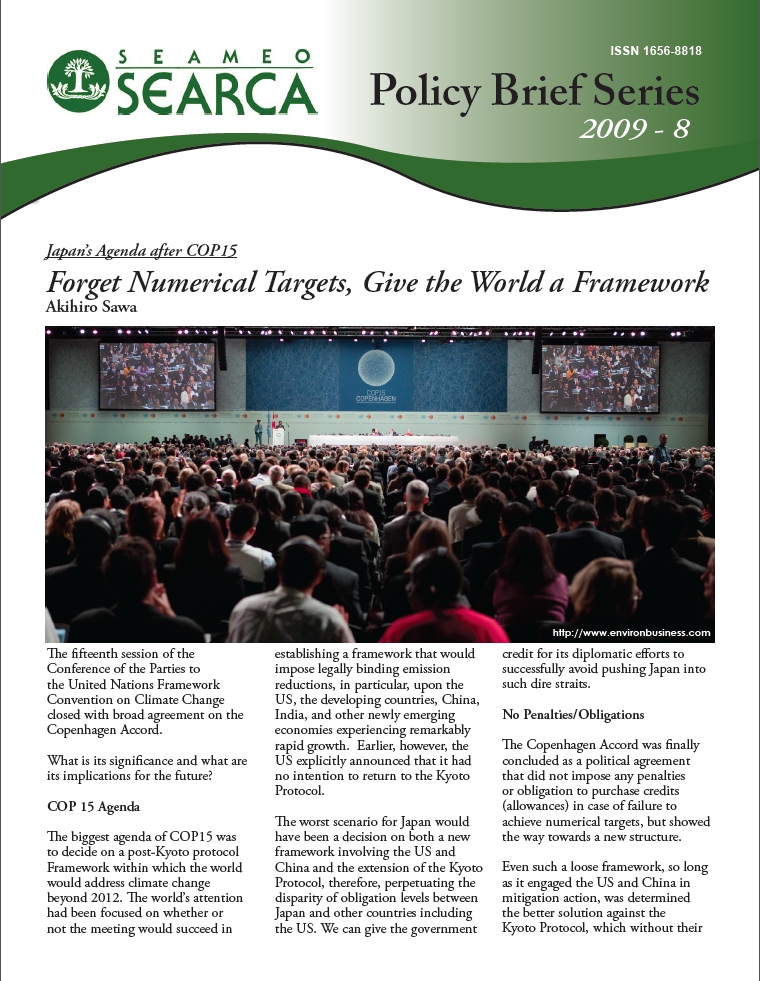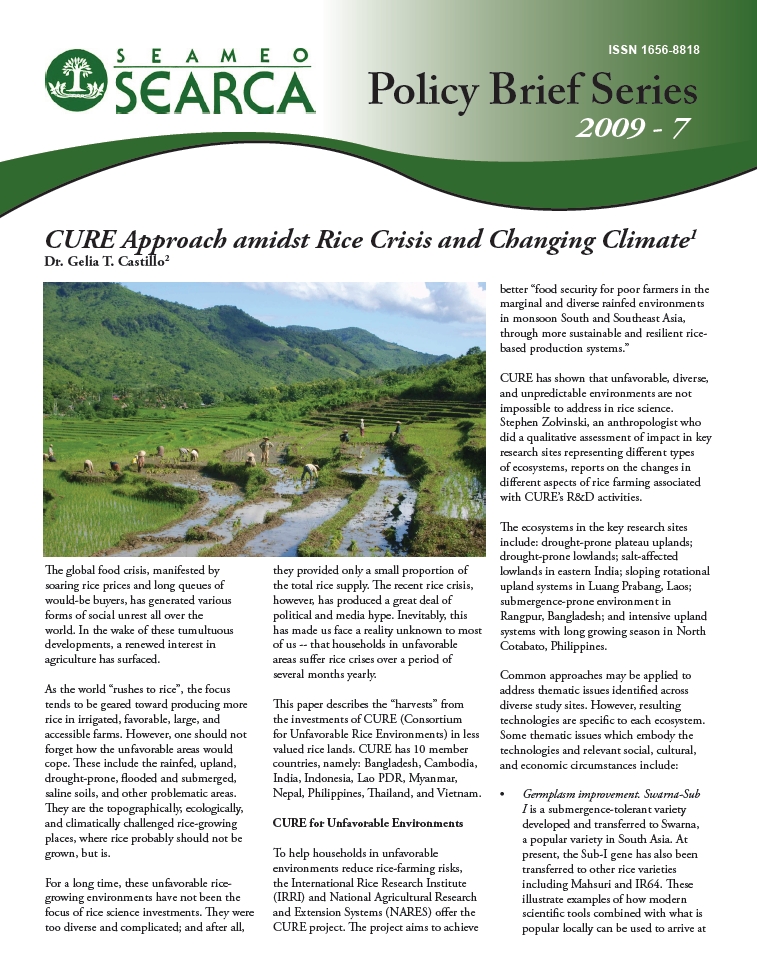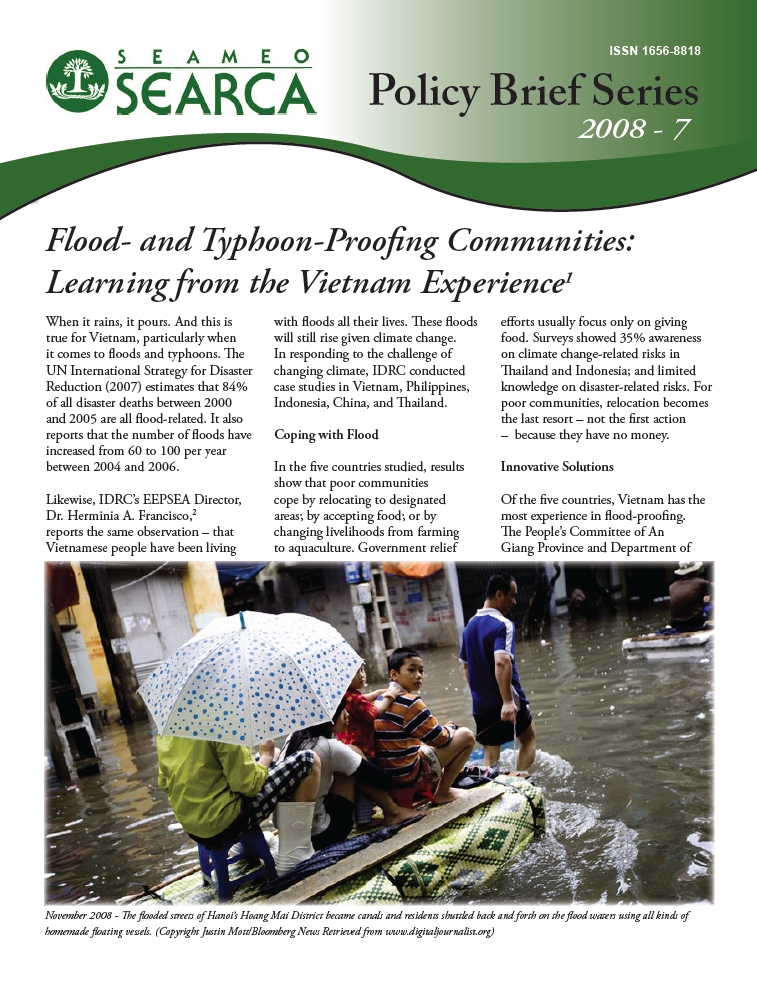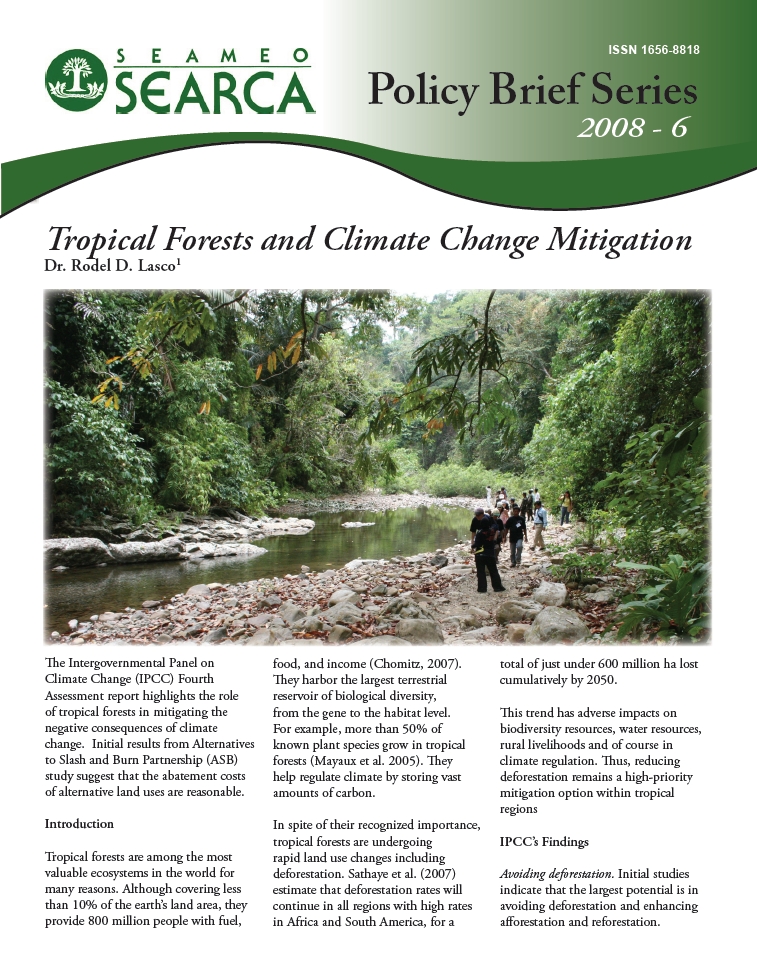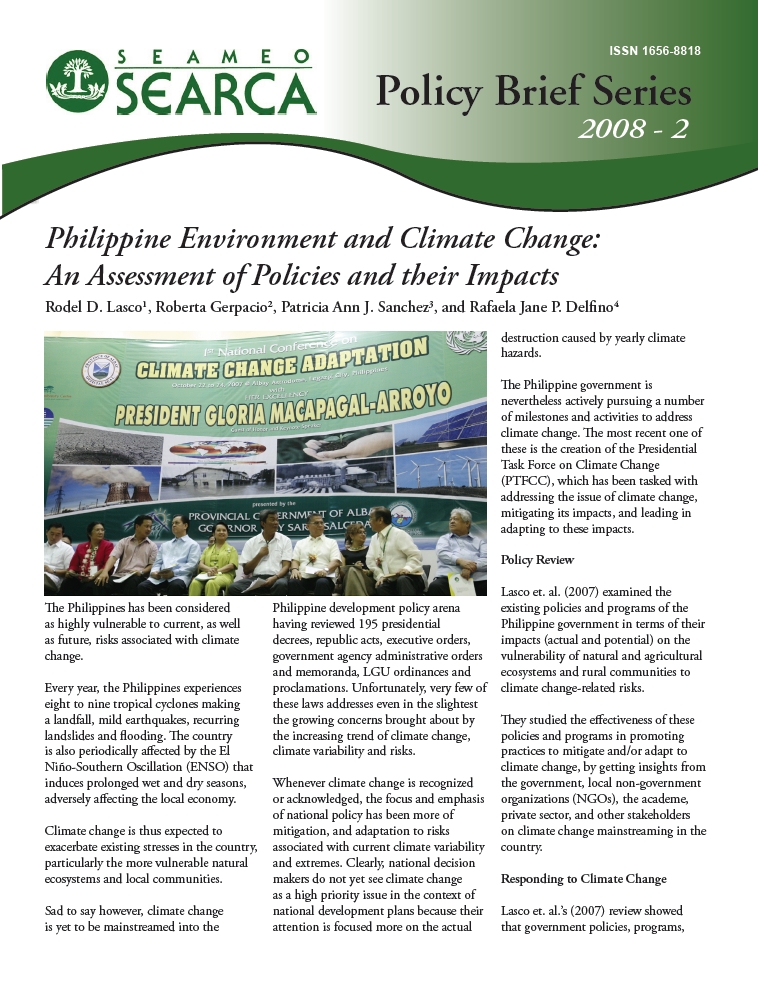Policy Briefs
The case of Leyte and Southern Leyte Leyte and Southern Leyte are two provinces in the Philippines with the most catastrophic landslide history. The worst of which occurred in Ormoc City, Leyte in November 1991 and in Panaon Island, Southern Leyte on 19 December 2003. These events, triggered by heavy and continuous rain, claimed the lives of more than 5,000 landslide and flashflood victims in Ormoc City and 200 people in Southern Leyte. On 17 February 2006, a massive landslide also occurred in Barangay Guinsaugon, St. Bernard, Southern Leyte where more than 1,000…
The threats of climate change could adversely affect groundwater resources. In the Philippines - whose population relies heavily on groundwater resources for domestic, agricultural, industrial and other uses - it is important to quantitatively determine the potential effects of climate change on these resources to serve as a basis for sustainable groundwater management. Advanced computer simulation techniques, such as the numerical groundwater model, are yet to be fully utilized in analyzing and predicting the effects of climate change on groundwater the Philippines. With this in mind, a research supported by SEARCA’s Seed Fund For Research and Training…
Nearly 100 million rice farmers live in unfavorable rice environments. These communities are among the poorest and most vulnerable to climate change. Solutions are urgently needed to avoid some of the worst impacts of climate change. At a Consortium for Unfavorable Rice Environments (CURE) workshop held in Cambodia in May 2010, with the theme: Responding to changing climate in the unfavorable rice environments, climate specialist Kay Sumfleth outlined some of the expected impacts of climate change. Climate modelers suggest that…
As population increases and as lowland farm lands are rapidly being diverted to alternative uses, the uplands will have an increasing role in securing food. But, without appropriate soil conservation techniques, upland soils become prone to erosion and could eventually become infertile as production intensifies leading to unsustainable production. Farmers adopt soil conservation technologies to maintain the natural resource base and the soil quality of their farm area. There are factors, however, that induce farmers to adopt these technologies. On…
The fifteenth session of the Conference of the Parties to the United Nations Framework Convention on Climate Change closed with broad agreement on the Copenhagen Accord.
The global food crisis, manifested by soaring rice prices and long queues of would-be buyers, has generated various forms of social unrest all over the world. In the wake of these tumultuous developments, a renewed interest in agriculture has surfaced. As the world “rushes to rice”, the focus tends to be geared toward producing more rice in irrigated, favorable, large, and accessible farms. However, one should not forget how the unfavorable areas would cope. These include the rainfed, upland, drought-prone,…
When it rains, it pours. And this is true for Vietnam, particularly when it comes to floods and typhoons. The UN International Strategy for Disaster Reduction (2007) estimates that 84% of all disaster deaths between 2000 and 2005 are all flood-related. It also reports that the number of floods have increased from 60 to 100 per year between 2004 and 2006. Likewise, IDRC’s EEPSEA Director, Dr. Herminia A. Francisco, two reports the same observation – that Vietnamese people have been…
Tropical forests are among the most valuable ecosystems in the world for many reasons. Although covering less than 10% of the earth’s land area, they provide 800 million people with fuel, food, and income (Chomitz 2007). They harbor the largest terrestrial reservoir of biological diversity, from the gene to the habitat level. For example, more than 50% of known plant species grow in tropical forests (Mayaux et al. 2005). They help regulate climate by storing vast amounts of carbon. In…
The Philippines has been considered as highly vulnerable to current, as well as future, risks associated with climate change. Every year, the Philippines experiences eight to nine tropical cyclones making a landfall, mild earthquakes, recurring landslides and flooding. The country is also periodically affected by the El Niño-Southern Oscillation (ENSO) that induces prolonged wet and dry seasons, adversely affecting the local economy. Climate change is thus expected to exacerbate existing stresses in the country, particularly the more vulnerable natural ecosystems…
Page 2 of 2
- 1
- 2

